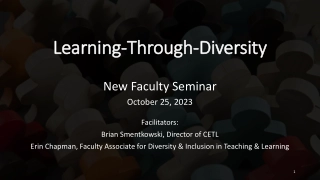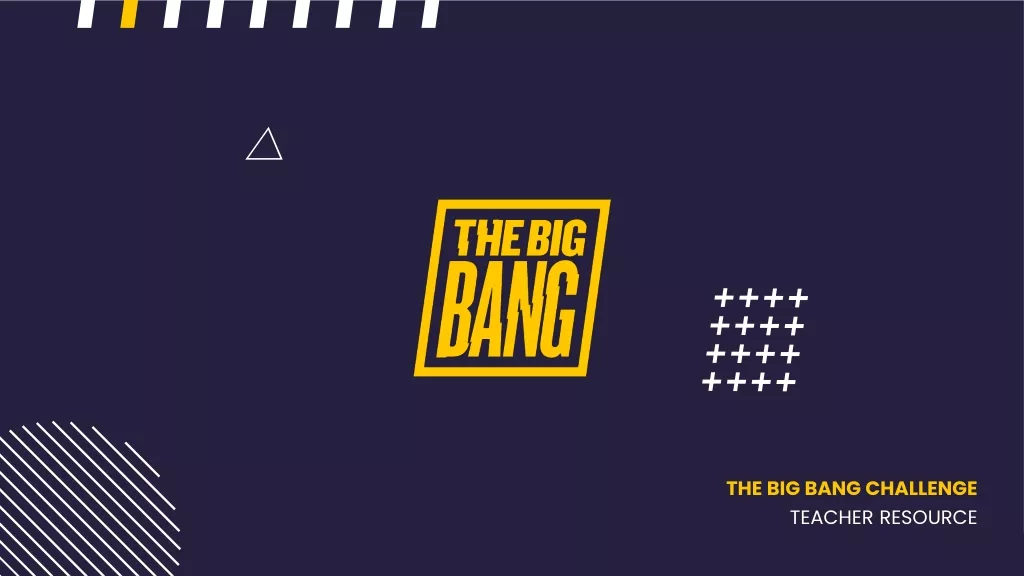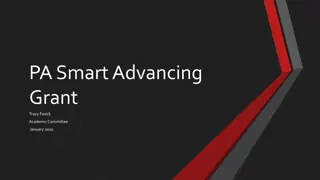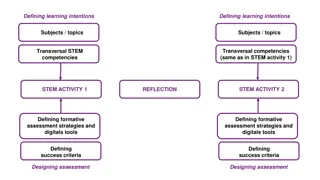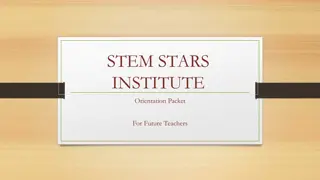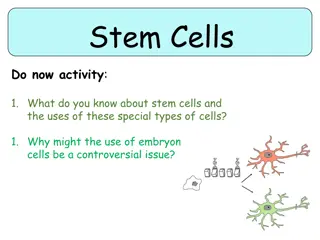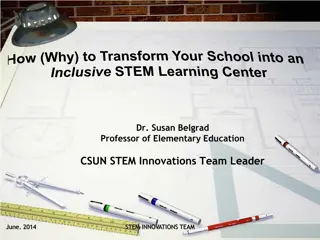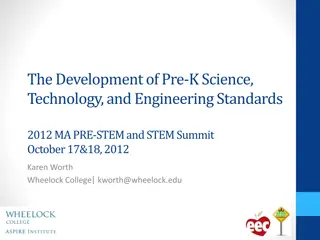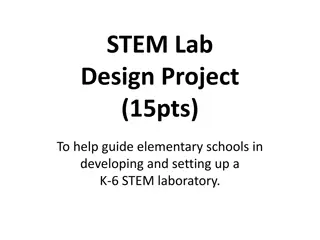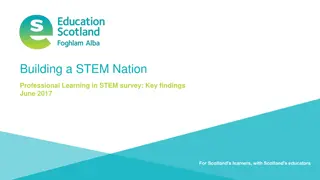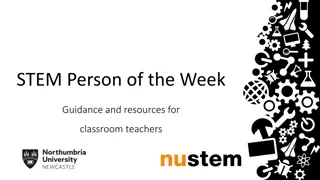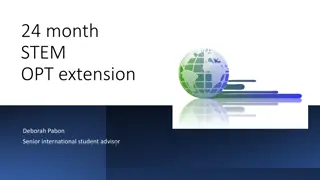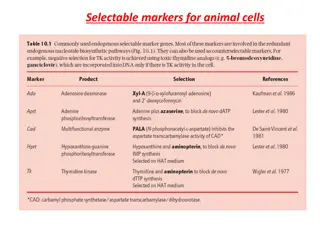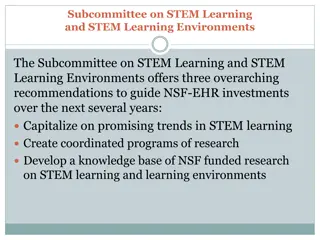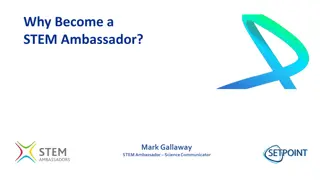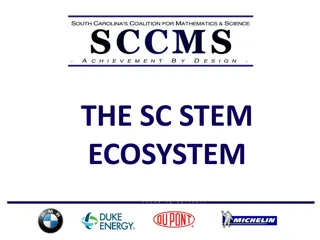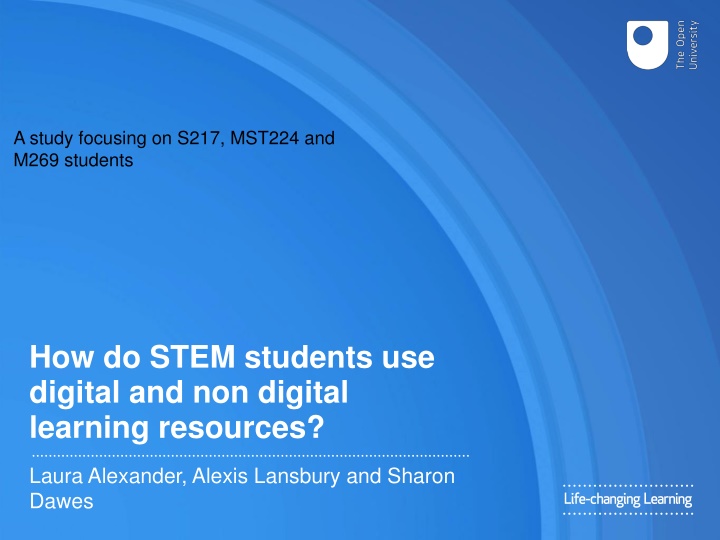
STEM Student Use of Learning Resources in Higher Education
Explore how STEM students in courses like S217, MST224, and M269 utilize digital and non-digital learning resources, the impact of encountering various media formats, differences in experiences between levels, and objectives to identify preferences and correlations for effective learning strategies.
Download Presentation

Please find below an Image/Link to download the presentation.
The content on the website is provided AS IS for your information and personal use only. It may not be sold, licensed, or shared on other websites without obtaining consent from the author. If you encounter any issues during the download, it is possible that the publisher has removed the file from their server.
You are allowed to download the files provided on this website for personal or commercial use, subject to the condition that they are used lawfully. All files are the property of their respective owners.
The content on the website is provided AS IS for your information and personal use only. It may not be sold, licensed, or shared on other websites without obtaining consent from the author.
E N D
Presentation Transcript
A study focusing on S217, MST224 and M269 students How do STEM students use digital and non digital learning resources? Laura Alexander, Alexis Lansbury and Sharon Dawes
eSTEeM project Laura Alexander and Alexis Lansbury If students meet modules which rely on different media for learning resources part way through their studies, what is the impact of this? Does it affect student progression and retention and could there be ways to mitigate this impact? 2
Students have very different experiences at level 1 and at level 2 Focus on S217, MST224 and M269 students. Science (Physics) Mathematics Computing Level 1, Previously S104, MST124, (book based and online) From 2016 entirely online (S111 and S112) Or Online and book based (S111 and MST124) Level 1 Mostly book based study resources (eg MU123, MST124, MST125, M140) Level 1 TM111, TM112, TM129, MU123 or MST124 Level 2 - S217 Entirely online Level 2 - MST224 purpose-written text- books Level 2 - M269 blend of digital resources, texts in the public domain and texts specifically developed for the module
Aims and Objectives Identify similarities and differences between the different approaches that schools in STEM take Identify the similarities and differences between students learning strategies in the different schools Identify how the use that students make of different types of learning resource evolves over time Investigate whether students preferences for specific types of resource have any correlation with factors such as age, gender, first language/mother tongue Use individual interviews to investigate whether any correlation has an underlying causality. 4
Data Collection Sent a questionnaire to students on Oct 2017 presentations of S217, MST224 and M269 in January 2018, and repeated this for October 2018 presentation in Jan 2019 Mix of quantitative and qualitative questions 200 students on each module. 17-18% response rate, including at least 30 students on each module in each year 5
What did we ask them? What was your first level 1 module? What methods did you use to study it? (select from list plus text box) What proportion of your time was spent using each method? Did you change how you studied for subsequent level 1 modules? (Why?) Considering current level 2 module, What methods did you use to study it? (select from list plus text box) For your current level 2 module, did you need to change how you studied? (Why?) Did this cause you any issues? (What issues?) Would you be willing to take part in follow up interviews? 6
What resources did students use? Green digital, Orange paper based Used most Online quizzes and iCMAs Doing module exercises and activities on paper Making notes on paper Using module software Annotating module textbooks (where available) Using Forums Accessing additional books Making notes using a word-processor Using external digital resources Annotating printed PDFs Annotating files on-screen Using print versions of online module materials Using a personal blog Used least * * * 7
How do you study Online quizzes and iCMAs and Doing module exercises and activities on paper were two most popular ways of studying for both initial level 1 and current level 2 modules. Fairly even split between using digital and non-digital resources at level 1 and level 2. Computing Maths Physics First Level 1 Module, methods of study Digital 58% 46% 51% Non-digital 42% 54% 49% Current Level 2 Module, methods of study Digital 61% 48% 47% Non-digital 39% 52% 53% 8
How do you study, digital vs non digital Students seem to stick to the approach they developed on their first level 1 module Max 3% shift in digital/non digital study approach from first level 1 to first level 2 But 47% of all students surveyed felt they had to change their approach to study as they moved to level 2 study! Indicates students find an alternative method which still falls into the same category? For example, S217 students, (whose S217 module material was entirely online), appear to have changed from annotating module textbooks at level 1 to annotating printed pdfs when studying S217, rather than developing ways to annotate information online or making notes electronically. 9
Entirely online module? 10
Did you have to change how you studied? Note most S217 Physics students in 17J had studied S104 as their first OU module Students currently studying module Approach changed between first level 1 module and subsequent level 1 modules Approach changed when studying first level 2 module 5 (14%) 17 (49%) Computing 5 (15%) 9 (27%) Maths 9 (20%) 27 (60%) Physics Total 19 (17%) 53 (47%) 11
Studying at level 2 did changing approach cause issues? Module Changing approach caused issues (percentage of those who had to change approach) 9 (53%) Computing 3 (33.%) Maths 23 (85%) Physics 35 (66%) Total 12
Does first module studied set preferred study methods? Data from respondents from 17J and 18J cohorts combined Percentage responding who felt they had to change approach when starting their level 2 module Percentage changing approach for whom this change caused issues Module(total number of respondents) Total number S217(88) First module S111 23 41% 44% First module S104 31 83% 84% First module level 1 maths 22 63% 67% MST224(81) First module S111 6 33% 50% First module S104 18 29% 0% First module level 1 maths 47 18% 50% M269(66) First module level 1 maths 13 50% 40% First module TU100 40 58% 43% 13
Focusing on S217 in the context of these results We now know what students perceive causes them problems Does this actually affect how they perform on the module? S217 provides a perfect chance to investigate this. 14
Looking at S217 results Having studied an online module at level 1 was a better predictor of success for the onscreen only S217 than having studied more maths or more physics 15
Grade of pass on S217 Students studying at full time rate S111 students half as likely to fail S217, and 30% more likely to get a grade 1 or 2 pass Chart showing distribution of S217 results for students by whether they had completed S104 or S111 1 year previously (16J, 17J and 18J students) 100% Fail/Resit Fail/Resit 90% Grade 4 80% Grade 4 Grade 3 70% 60% Grade 3 50% Grade 2 40% Grade 2 30% 20% Grade 1 Grade 1 10% 0% S104 1 year before S111 1 year before Grade 1 Grade 2 Grade 3 Grade 4 Fail/Resit Fail/No Resit 16
Conclusions in an OU context Also checked for age, educational background etc Having completed an entirely online Stage 1 module is a better predictor of success on the entirely onscreen Stage 2 S217 Physics module than having completed a module which contains more physics and more opportunities to apply maths to solve physics problems. The perception of students that they perform less well when they suddenly meet a module where all the material is supplied onscreen appears to be correct. Consideration needs to be given to likely pathways through qualifications to avoid this happening later in a student s studies. Onscreen study skills can be learnt, it is important to give all students the opportunity to gain these skills at Stage-1 if they are going to meet entirely onscreen modules later in their studies. Note-taking for onscreen material is a key skill. 17
Analysis of free text comments 17J cohort Primary concern raised by each student who made open text comments Wanted more books 9% Wanted more digital learning resources 7% Difficulty of subject matter 6% 5% More detail needed in module materials 56% 5% Lack of integration of materials (M269) 12% More opportunity for practice needed Other 18
Secondary concerns more revealing Highlighted other preferences including:- Desire for more non-textual online content Desire for offline access to digital resources Enjoy the combination of books and online 19
Further analysis of free text comments 17J cohort Combined primary and secondary concerns raised by students who made open text comments Wanted more books Wanted more digital learning resources 6% 5% 7% 5% Difficulty of subject matter 4% More detail needed in module materials 8% Lack of integration of materials (M269) 8% More opportunity for practice needed 44% 5% Wanted more none textual online content 8% Wanted offline access Like combination of books and online Other (including tutorials) 20
In depth interviews We completed approx 12 in depth interviews 'I find it easier to learn from a book than I do from looking at a screen. I look at a screen all day long at work' 'I m less likely to take notes when I m reading it digitally What do you think would make a well-integrated package of learning resources for a module? Every student wanted books plus visual and interactive online resources, particularly more practice iCMAs with detailed answers, and more recorded screencasts. Several students referred to MST124 or S104 as their ideal combination of digital and book based Online note taking only seemed to be at all effective for those with the newer iPad Pro and an Apple pencil. Even these students said annotating paper copies was better. Many students said that they remembered content studied on paper better, they could visualise it on the page. Ties in with other research Internet access issues meant they wanted digital resources that were available offline several references to DVDs. 21
Do younger students prefer online? Students from 17J and 18J combined whose comments expressed a desire for more books or more digital online content, by age, as percentage 100% 0 0 0 2 3 1 1 1 90% 2 4 80% 70% 60% 50% 13 5 5 14 19 5 5 5 40% 6 7 30% 20% 10% 0% 25 and under 26-30 31-35 36-40 41-45 46-50 51-55 56-60 61-65 over 65 More books More digital 22
STEM students Want the best of both worlds, they:- 1. Use a mix of digital and paper-based study methods, regardless of whether a module is presented entirely digitally, or has a mix of paper and digital resources. 2. Prefer to have a combination of book based and digital resources. 3. Particularly value screencasts and online quizzes 4. Find two devices with large screens are required to study entirely digital material 5. Find books better for studying while travelling, both for ease of use and because of poor internet connectivity while travelling 6. Want to be able to access digital module material offline 7. Want to be able to access a digital version of any paper module books. 23

